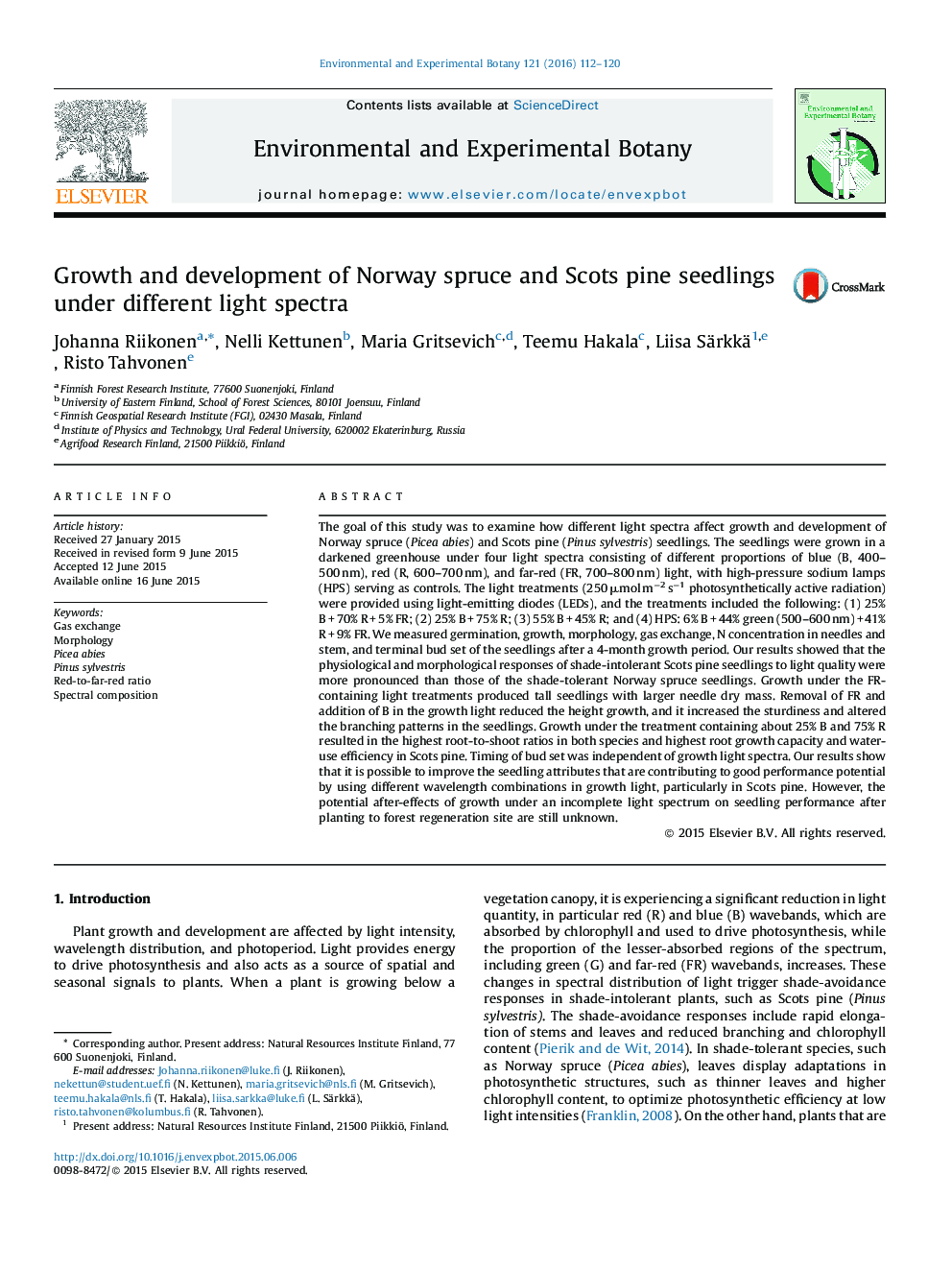| کد مقاله | کد نشریه | سال انتشار | مقاله انگلیسی | نسخه تمام متن |
|---|---|---|---|---|
| 4554112 | 1628056 | 2016 | 9 صفحه PDF | دانلود رایگان |
• Scots pine was more responsive to the light treatments than Norway spruce.
• Growth light spectra affect seedling attributes contributing to performance potential.
• Root-to-shoot ratios were highest under 25% blue and 75% red in both species.
• Root growth capacity and WUE were highest under 25% blue and 75% red in Scots pine.
The goal of this study was to examine how different light spectra affect growth and development of Norway spruce (Picea abies) and Scots pine (Pinus sylvestris) seedlings. The seedlings were grown in a darkened greenhouse under four light spectra consisting of different proportions of blue (B, 400–500 nm), red (R, 600–700 nm), and far-red (FR, 700–800 nm) light, with high-pressure sodium lamps (HPS) serving as controls. The light treatments (250 μmol m−2 s−1 photosynthetically active radiation) were provided using light-emitting diodes (LEDs), and the treatments included the following: (1) 25% B + 70% R + 5% FR; (2) 25% B + 75% R; (3) 55% B + 45% R; and (4) HPS: 6% B + 44% green (500–600 nm) + 41% R + 9% FR. We measured germination, growth, morphology, gas exchange, N concentration in needles and stem, and terminal bud set of the seedlings after a 4-month growth period. Our results showed that the physiological and morphological responses of shade-intolerant Scots pine seedlings to light quality were more pronounced than those of the shade-tolerant Norway spruce seedlings. Growth under the FR-containing light treatments produced tall seedlings with larger needle dry mass. Removal of FR and addition of B in the growth light reduced the height growth, and it increased the sturdiness and altered the branching patterns in the seedlings. Growth under the treatment containing about 25% B and 75% R resulted in the highest root-to-shoot ratios in both species and highest root growth capacity and water-use efficiency in Scots pine. Timing of bud set was independent of growth light spectra. Our results show that it is possible to improve the seedling attributes that are contributing to good performance potential by using different wavelength combinations in growth light, particularly in Scots pine. However, the potential after-effects of growth under an incomplete light spectrum on seedling performance after planting to forest regeneration site are still unknown.
Journal: Environmental and Experimental Botany - Volume 121, January 2016, Pages 112–120
